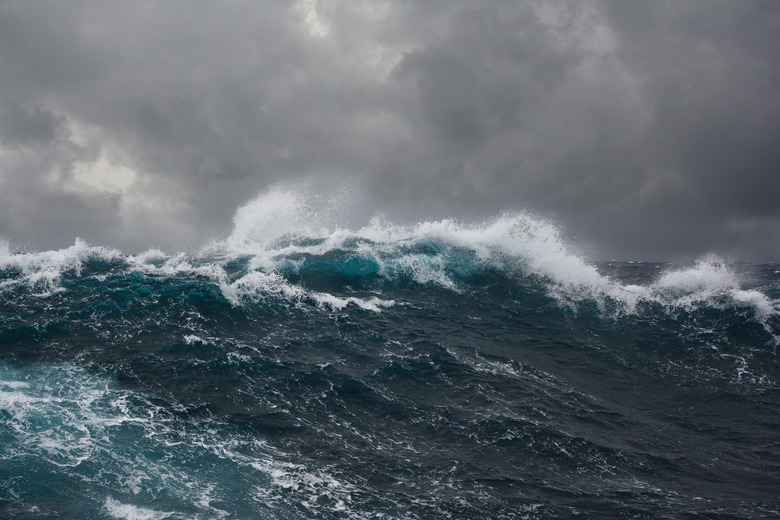Facts About The Oceanic Zone
The world's oceans cover almost three-quarters of the Earth's surface. Over 97 percent of the Earth's water is salt water. The oceans may seem mysterious and inaccessible, but scientists explore the oceanic zone using numerous tools. As the oceans' secrets are discovered, scientists describe the oceans in a variety of ways.
Types of Ocean
Types of Ocean
Unlike the artificial subdivision of the ocean into the "seven seas," modern oceanographers consider the ocean as one body of water. This change in thinking developed as researchers learned more about the great conveyor belt, a large current that moves water around the Earth. This current, driven by density differences due to variations in salinity and temperature, travels through the deep and surface waters, ultimately circumnavigating the globe through every oceanic zone. People now realize that, rather than different types of ocean, there is only one world ocean.
Dividing the Ocean
Dividing the Ocean
The ocean can be divided into zones based on different sets of characteristics. For example, the ocean can be divided into three zones based on density changes resulting from temperature and salinity variations. The three zones in that classification are the surface or mixed zone, the pycnocline and the deep ocean. Another system describes the neritic or shallow zone, then separates the open ocean or pelagic zone from the ocean bottom or benthic zone. These two zones are then subdivided based on depth. Another way of subdividing the ocean considers how deep light penetrates the ocean.
Oceanic Zones Based on Light
Oceanic Zones Based on Light
The epipelagic zone tends to be the warmest layer of the ocean. Swimming, fishing, beach combing and other activities let people interact with the plants and animals in this zone. Familiar epipelagic plants and animals include:
- corals
- kelp
- manatees
- jellyfish
- crabs
- lobsters
Fish with lunate or crescent-shaped tails tend to live in the epipelagic zone. Many animals in the epipelagic zone are fast moving, transparent or small, all adaptations to avoid being eaten.
Food and Migration
Food and Migration
Scarcity of food in the lower levels of the ocean means that some organisms move vertically between zones every day. This is called diel migration. Other organisms move freely horizontally and vertically, feeding where convenient. The blue whale, the largest animal ever known, eats tiny krill in the epipelagic zone, feeding in the colder, krill-rich waters near the poles before migrating to warmer waters to give birth. Some organisms, however, are so well-adapted to their oceanic zone that they can never leave.
References
- National Oceanic and Atmospheric Administration: Ocean Zones
- Montgomery College: Ocean Layers
- University of Southern Florida: Animal Adaptations and Distributions I
- University of Southern Florida: Animal Adaptations and Distribution II
- Smithsonian: Ocean Layers
- University of Hawai'i: Depth Zones
- National Oceanic and Atmospheric Administration: Ocean Layers II
- WhaleFacts.org: Blue Whale Facts
Cite This Article
MLA
Blaettler, Karen G. "Facts About The Oceanic Zone" sciencing.com, https://www.sciencing.com/oceanic-zone-8592007/. 22 November 2019.
APA
Blaettler, Karen G. (2019, November 22). Facts About The Oceanic Zone. sciencing.com. Retrieved from https://www.sciencing.com/oceanic-zone-8592007/
Chicago
Blaettler, Karen G. Facts About The Oceanic Zone last modified March 24, 2022. https://www.sciencing.com/oceanic-zone-8592007/
